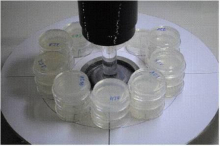| Plans for radiation effects studies |
|---|
Readers will find a description of the basic concepts, needs, data generation and mathematical treatment for the approaches STAR will implement to understand, quantify and model effects of ionising radiation in non-human species for chronic low dose rates exposure situations.
It also contains a preliminary state-of-the-art needed to explain the reasoning we are proposing for understanding mechanisms underlying molecular mode of action of radiation exposures, together with a brief review of the various omic tools available for gaining insights into modes of actions. Common guidance for scaling any of our experiments is illustrated through the presentation of the pilot study we decided in order to test our ability to share experiments among partners (hypothesis - choice of species & endpoint – experimental design – scaling the range and space of dose rates - data treatments). This study was conducted using a model organism,Caenorhabditis elegans (nematode). The C. elegans model can be summarised by a short life cycle, a small size and a great ease to handle and cultivate in various devices. In the pilot study, the objective was to obtain accurate data to implement a DEBtox model applied to external gamma radiation. The ultimate target is to assess potential consequences on the population. |
 |
| Illustration of the pilot study on C. elegans (nematodes). Experimental units around the irradiation source (liquid) Photo J.M. Bonzom, IRSN |
